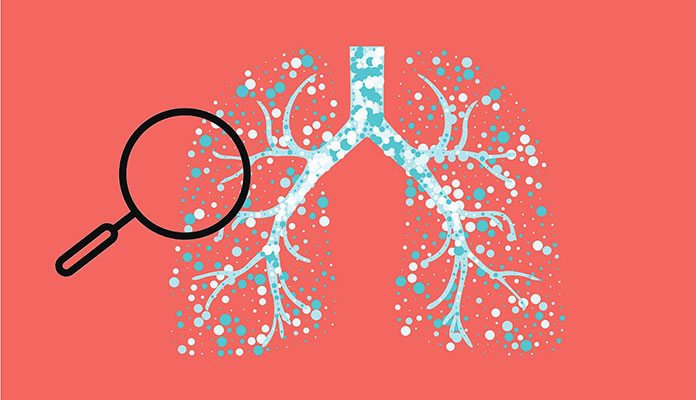Beyond Smoking: How Air Pollution, Work & Home Affect Your COPD
Share IT

Launch Your Dream Website with Us!
Click Here to Get in touch with Us.
Categories
Environmental Triggers for COPD
Breathing in Peril: How Environmental Elements Cause and Exacerbate COPD
Airflow restriction is a hallmark of chronic obstructive pulmonary disease (COPD), a progressive lung illness. Although smoking is the primary cause, environmental variables also play a key role in the development of COPD and aggravate pre-existing symptoms. The effects of indoor air quality, occupational exposures, and air pollution on lung health and COPD are examined in this blog post.
Thank you for reading this post, don't forget to subscribe!Table of Contents

Air Pollution: An Ignored Danger
Environmental Triggers for COPD
Patients with COPD are significantly at risk from outdoor air pollution:
- Particulate Matter (PM): Particles as small as PM2.5 have the ability to enter the lungs deeply, causing inflammation and exacerbating symptoms.
- Ozone: Ozone at ground level irritates the airways, resulting in symptoms similar to COPD, such as coughing, wheezing, and shortness of breath.
- Nitrogen Dioxide (NO2): Prolonged exposure to NO2 can exacerbate COPD management by exacerbating airway inflammation.
Consequences: include a higher chance of developing COPD, more frequent and severe exacerbations, and a quicker pace of lung function reduction.- Suggestions: Keep an eye on air quality reports, stay indoors during days with heavy pollution, use air purifiers at home, and wear properly fitting N95 masks as needed.
Occupational Exposures: Workplace Danger
Environmental Triggers for COPD
There are serious lung health hazards associated with some workplaces:
- Dust and Fumes: Grain handling, coal mining, and construction all produce dust that can irritate the lungs and hasten the onset of COPD.
- Chemicals: Employees who work with chemicals such as solvents and isocyanates, which are present in paints, may suffer lung damage and a higher chance of developing COPD.
- Fumes: Inflammation and the development of COPD can be caused by welding fumes and other airborne pollutants.
- Consequences: Workplace exposure can cause work-related COPD, exacerbate exacerbations, and hasten the course of COPD.
Advice: If you work in a high-risk area, think about getting screened for respiratory illnesses, support better ventilation systems in workplaces, and wear the proper personal protective equipment (PPE) as required by safety standards.
Indoor Air Quality: Unrecognised Risks Unseen hazards to lung health can exist even in our homes:
Environmental Triggers for COPD
- Secondhand Smoke: Even for non-smokers, being around secondhand smoke from cigarettes, pipes, or cigars increases the chance of developing COPD.
- Mould and Fungal Spores: In COPD patients, mould and fungal spores can irritate the respiratory system and cause symptoms.
- Volatile Organic Compounds (VOCs): Paint, cleaning, and building material off-gassing can exacerbate the symptoms of COPD and lead to indoor air pollution.
Environmental Triggers for COPD
Repercussions include a decrease in quality of life, breathing difficulties, and an increase in exacerbations.
Advice: Keep your home well-ventilated by keeping windows open, using exhaust fans in the kitchen and bathroom, taking quick action to deal with mould problems, using low-VOC paints and cleaning supplies and refraining from smoking.
Self-Empowerment: Reducing Environmental Hazards
Environmental Triggers for COPD
Taking charge of your surroundings can greatly enhance the health of your lungs:
- Keep Up to Date: To reduce your exposure to pollutants on days with heavy pollution, keep an eye on weather alerts and air quality data.
- Promote Change: Encourage the implementation of laws that tighten controls on job dangers and encourage cleaner air.
- Establish a Healthful Home: Use low-VOC products, prioritise ventilation, and keep your home clean to reduce indoor air pollution.
- Talk to Your Physician: Talk to them about your workplace and any possible risks you may have, and let them know about any worries you have about your home environment.
In summary: Standing Up for Healthy Lungs and Clean Air
Environmental Triggers for COPD
You can reduce your exposure to environmental factors by taking proactive measures to understand their impact on COPD. Speak up for cleaner air, take care of your interior environment, and be honest with your physician. When paired with appropriate medical care, these steps can help you breathe more easily and effectively manage your COPD.
Notice: This information is not meant to be a substitute for expert medical advice; rather, it is meant for general understanding only. Always seek the advice of a medical professional for COPD diagnosis and treatment.

Launch Your Dream Website with Us!
Click Here to Get in touch with Us.





























































Recent Comments